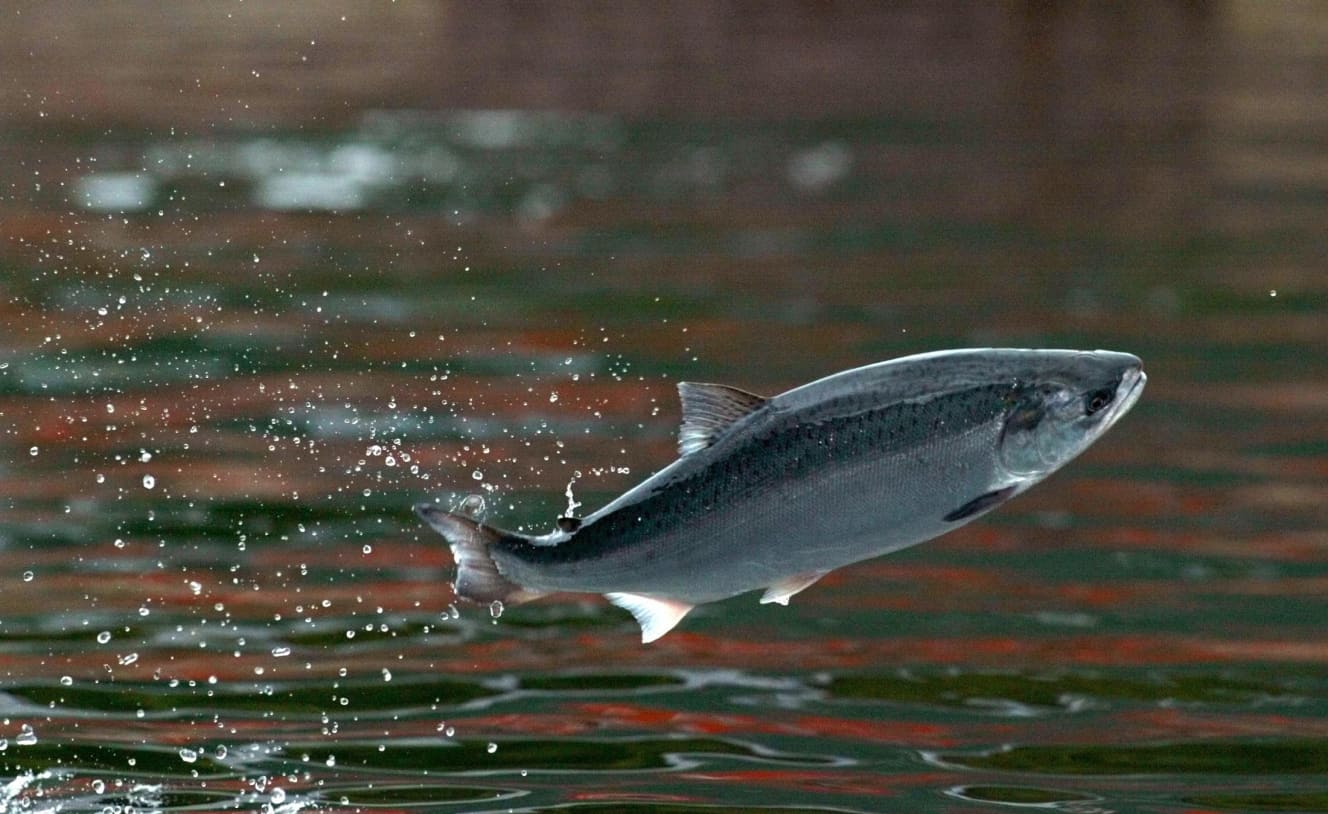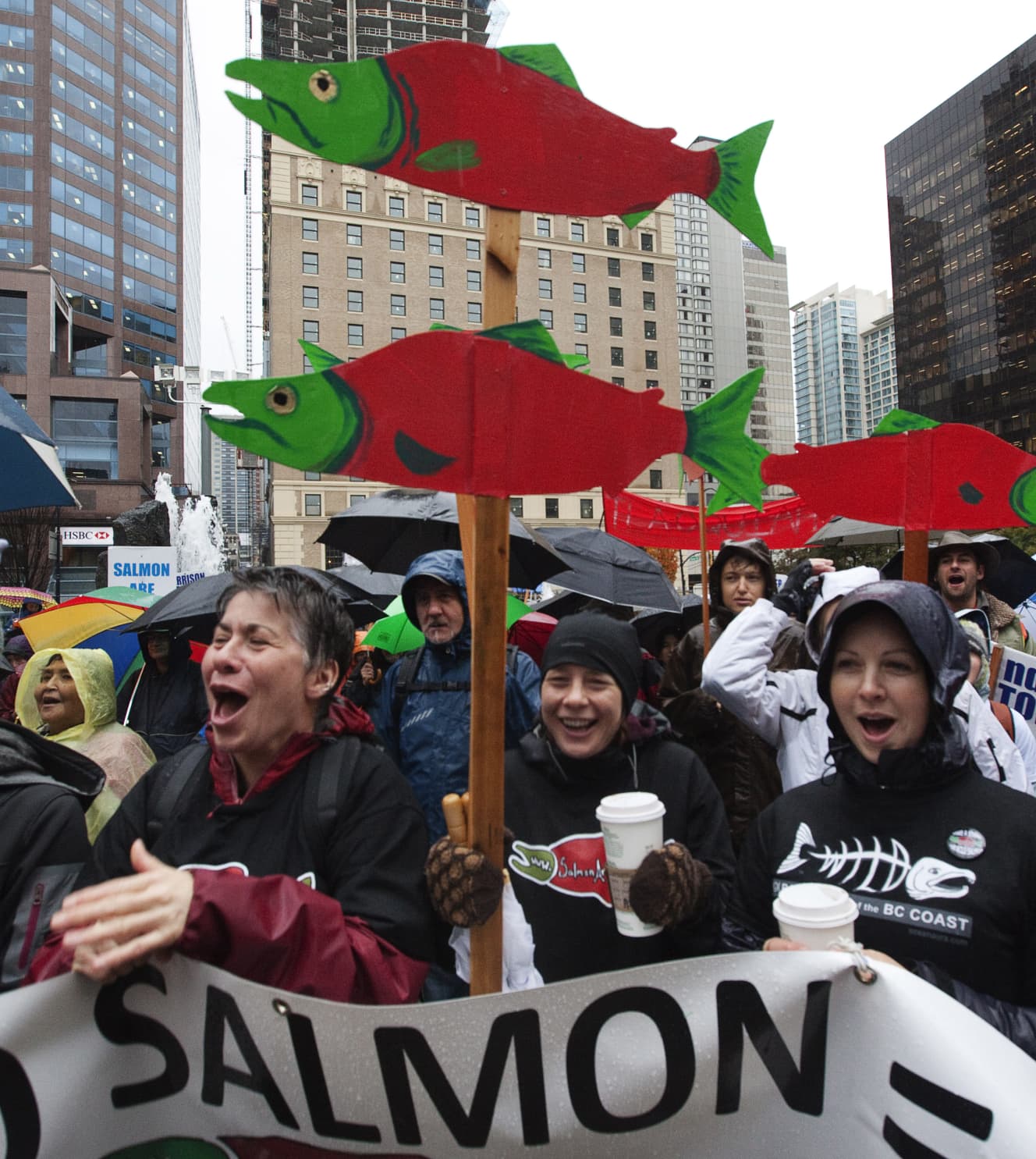99% never return… Where did the “salmon that never return to the river where they grew up” go?
Today’s salmon are not wild enough!
The return rate of salmon returning to the rivers where they grew up has been drastically decreasing. Is this another effect of global warming?
What is being said these days is that the salmon are not wild enough now because the hatching and release programs have been going on for so long. In the hatching and release program, eggs are taken from female salmon and fertilized by pouring male sperm over them.
What happens when generations of salmon have never experienced spawning by themselves? The fry are raised in an environment where they are fed when the time is right, rather than having to find and eat their own food; they are released when they reach about 1 gram, but how strong are they to catch their own food when they are released into the wild? I am interested to see if the salmon’s adaptability to nature has declined.
says Makoto Hatayama of the Hokkaido Research Organization’s Salmon and Inland Fisheries Experiment Station.
The national average return rate for 2020 and 2021 is 1.2%! Hokkaido did a little better, with 1.8% in 2020 and 2.0% in 2021, but Fukushima and other prefectures had 0.04% in 2020 and 0.01% in 2021. According to statistics from the National Fisheries Research and Education Organization, 19.26 million salmon returned to Japan’s rivers last fiscal year, 22% of the peak in fiscal 1996.
That’s right. Only a very small number returned. Hokkaido’s salmon catch peaked in 2004, when the return rate was 5.9%. Hokkaido releases about 1 billion salmon every year, and 60 million of them return. Now it is about one-third of that number.”

The reality is that 99% of the released fry do not return. Pacific saury and yellowtail move to places where the sea water temperature is more favorable for their habitat. Even salmon may not return to the river where they were born, but go to more habitable rivers in Canada or Alaska.
That is not the case. Lately, there are times when the water temperature is higher in the fall, when the salmon return. At those times, they come into the river from deeper waters. I think sometimes it is difficult for them to come close when the coastal water temperature is high, but in the end they come because they have no choice but to come.
In the process of searching for the river where they were born, they sometimes enter other rivers, but it is unthinkable for Japanese-born salmon to go abroad. They seem to have a peculiar obsession.”

A good catch in Hokkaido! But This year’s salmon are small in size
However, Hokkaido is enjoying a bumper catch this year. In the Rumoi area, the autumn salmon catch has exceeded 3,000 tons for the first time in 32 years.
We forecast the catch every year, but we didn’t expect it to be this high. I thought it would be about two-thirds this amount.
This year, he believes that the released salmon fry grew up well in the Bering Sea and other areas, and returned to the waters off Rumoi on the ocean currents.
However, we cannot be all that happy. This year’s salmon are small.
Salmon fry are released in the spring around April or May. From there they move to the Sea of Okhotsk, where they stay until autumn. After that, they move to the northern Pacific Ocean, where they spend three to five years before returning.
So there are three-year, four-year, and five-year fish among the returned salmon. In the past, an average salmon fish weighed more than 3 kg, but this year many of them weighed less than 3 kg. Recently, there has been a continuing trend of fewer 5-year fish.
There are many possible reasons. Either the slow-maturing 5-year fish are finding it harder to survive, they are maturing faster, or it is more beneficial for them to return home earlier. I think a study of their growth history will shed some light on this.”

What is happening to the salmon?
A good catch this year. Next year?
We don’t know. The salmon fishing season ends around December, so we will start looking at it early next year and give a forecast in the summer or so.
Why was the poor catch continuing in the first place? Is this another effect of global warming?
We cannot deny the impact of climate change as a major trend. It may be that the distribution of other fish has changed, making it easier for juvenile salmon to be preyed upon. The distribution of food may also be changing, and the organisms competing for food may also be changing.
In any case, we can only be involved until the fish are released. We are studying the nutritional enhancement of the bait, the timing of the release, and so on.
The temperature of the seawater at the time of release also has an impact.
It is thought that the fry die the most when they leave the river and enter the ocean. We release the fry when the sea water temperature reaches 5 degrees Celsius or higher, but if the sea water temperature does not rise as quickly as expected or, conversely, rises too quickly, they die.
We have to be in the Sea of Okhotsk by a certain time, and we release them according to the overall schedule, but recently the period between 5 and 13 degrees Celsius, which is suitable for fry to live, has become shorter and earlier, making it difficult to find the right time to release them,” he said.
Even if the sea water temperature rises, the salmon will continue to return to the river where they were born.
Perhaps some salmon will be born adapted to the changes in the environment. We also have to analyze this year’s good catch. We have a lot of work to do.
I have had a lot of trouble because of the poor catches, but I think I may be lucky to be doing this work at a time when salmon are undergoing major changes. I will try my best to think of it that way.
Makoto Hatayama belongs to the Department of Salmon Resources, Hokkaido National Research Institute, Hokkaido Prefectural Research Institute of Salmon and Inland Fisheries. Specializes in fish diseases and population genetics. Population genetics. He conducts research aimed at stabilizing salmon resources.
Interview and text by: Izumi Nakagawa